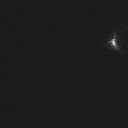
Alistair R. Evans*,
Ian S. Harper*† and Gordon D. Sanson*
*School of Biological Sciences, Faculty of Science, and †Microscopy
and Imaging Research Facility, Faculty of Medicine, Monash University,
Victoria 3800, Australia
This page contains the Supplementary Material and three-dimensional VRML models from Chapter 4 of Evans (2003; Evans et al. 2001, Journal of Microscopy 204: 108-118).
Abstract
This paper addresses the question of how close mammalian teeth are
to ideal functional forms. An ‘ideal’ form is a morphology predicted to
be the best functional shape according to information of the relationships
between shape and function. Deviations from an ideal form are likely to
indicate the presence of developmental or genetic constraints on form.
Model tools were constructed to conform to functional principles from engineering
and dental studies. The final model shapes are very similar to several
mammalian tooth forms (carnassial teeth and tribosphenic-like cusps), suggesting
that these tooth forms very closely approach ideal functional forms. Further
evidence that these tooth forms are close to ideal comes from the conservation
over 140 million years, the independent derivation and/or the occurrence
over a size range of several orders of magnitude of these basic tooth forms.
One of the main functional shapes derived here is the ‘protoconoid’, a
fundamental design for double-bladed tools that fits a large number of
functional parameters. This shape occurs in tooth forms such as tribosphenic,
dilambdodont and zalambdodont. This study extends our understanding of
constraints on tooth shape in terms of geometry (how space influences tooth
shape) and function (how teeth divide food).
Key words: confocal microscopy – moulding and casting – morphometrics
– measurement accuracy – surface noise measurement – GIS – VRML animation
Animated Gif

Animated view of optical slices stack through upper second molar of
Chalinolobus
gouldii.
VRML Models
A VRML browser is required to view the .wrl files on this page. VRML browser plug-ins for Netscape and Internet Explorer: PC (CosmoPlayer); Mac (Cortona).
Instructions for how to use CosmoPlayer.
| Virtual Reality Modelling Language reconstruction of upper second molar of Chalinolobus gouldii. Full page |
|
|
| Animated Virtual Reality Modelling Language reconstruction of occlusion of upper and lower molar rows of Chalinolobus gouldii. Full page |
|
|
Video
Video of Virtual Reality Modelling Language reconstruction of occlusion of upper and lower molar rows of Chalinolobus gouldii.
Return to Thesis Main Page
Alistair Evans,
May 2003